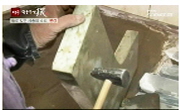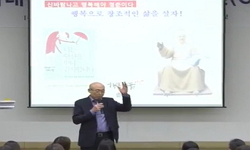세종은 1446년 용비어천가(龍飛御天歌)가 일단 편찬된 후 안견(安堅)에게 태조 이성계가 전장에서 어승(御乘)했던 팔준(八駿)을 그림으로 그리게 하고 정인지(鄭麟趾) 등에게 태조팔준(...
http://chineseinput.net/에서 pinyin(병음)방식으로 중국어를 변환할 수 있습니다.
변환된 중국어를 복사하여 사용하시면 됩니다.
- 中文 을 입력하시려면 zhongwen을 입력하시고 space를누르시면됩니다.
- 北京 을 입력하시려면 beijing을 입력하시고 space를 누르시면 됩니다.

세종의 태조팔준 현창 제술부과와 숙종·정조의 계승 = Sejong’s Assignments for Composing Praise to T’aejo’s P’alchun and the Succession in Sukchong and Chŏngjo’s Reigns
한글로보기부가정보
국문 초록 (Abstract)
세종은 1446년 용비어천가(龍飛御天歌)가 일단 편찬된 후 안견(安堅)에게 태조 이성계가 전장에서 어승(御乘)했던 팔준(八駿)을 그림으로 그리게 하고 정인지(鄭麟趾) 등에게 태조팔준(太祖八駿)의 찬(贊)과 「팔준도지(八駿圖誌)」를 제술하게 하여 용비어천가 제70장 주에 싣게 했다. 1447년 중시(重試) 문과의 재시(再試)에서는 「의집현전진팔준도전(擬集賢殿進八駿圖箋)」을 제술하게 했고, 중시 고시관 하연(河演)의 「팔준도시」 헌정을 계기로 여러 문신들에게 각기 시문 양식을 선택해서 팔준을 노래하게 했다. 이에 따라 관련 문헌들이 동문선과 각 문신들의 문집에 전하고, 후대에 여러 전승이 파생되었다. 세종 29년 중시 재시의 전(箋), 문신들이 응제한 시(詩)ㆍ부(賦)ㆍ송(頌)ㆍ명(銘)ㆍ찬(贊) 등의 관각문(館閣文)은 국가의 성대한 사적을 분식하여 숭고미를 지니고 있다. 세종이 태조의 건국 사업에 팔준이 협찬한 사실을 현창하여 정치에서 인재 협찬의 중요성을 암암리에 강조한 이후로 광해군, 숙종, 정조 등 후사왕들도 태조팔준을 환기하면서 왕조의 이념을 재확인했다. 본 논문은 팔준 관련 시문 창작의 경위와 이념, 후대의 환기 사실을 고증했다.
다국어 초록 (Multilingual Abstract)
After Yongbiŏch'ŏn'ga was first published in 1446, King Sejong ordered An Kyŏn to create “P'alchundo” (The Portrait of Eight Excellent Steeds). He directed Chŏng Inchi and others to compose panegyrics and “P'alchundoji,” which were subsequ...
After Yongbiŏch'ŏn'ga was first published in 1446, King Sejong ordered An Kyŏn to create “P'alchundo” (The Portrait of Eight Excellent Steeds). He directed Chŏng Inchi and others to compose panegyrics and “P'alchundoji,” which were subsequently included in the annotation of the seventeenth chapter of Yongbiŏch'ŏn'ga. During the retake of the “Chungshi” (re-opened) civil service examination in 1447, examinees were required to compose “Ŭi chip'yŏnjŏn chin p'alchundo chŏn” (a work simulating a commentary by scholars of “chip'yŏnjŏn” who dedicate “P'alchundo”). A dedicated poem, “P'alchundo shi,” by Ha Yŏn, the proctor of that exam, was followed by poetry and prose about “P'alchun” (the Eight Excellent Steeds) in various styles by numerous court officials. As a result, related literary works were preserved in Tongmunsŏn and individual officials’ literary collections. Stories derived from these works were also passed down through generations. The court literature of 1447, encompassing various genres such as poetry, odes, hymns, inscriptions, and panegyrics, embellishes the state’s glorious history and showcases sublime beauty. King Sejong's praise for King T'aejo, who founded the state with the aid of the Eight Steeds—a metaphor for the importance of support from talented officials— resonated in later reigns. Consequently, Monarchs like Kwanghaegun, Sukchong, and Chŏngjo evoked T'aejo's P'alchun to reaffirm the dynasty's ideology. This study analyzes the circumstances and ideological motivations behind the composition of literary works in 1447 which were related to “P'alchundo” and explores their continued significance in subsequent eras.
동일학술지(권/호) 다른 논문
-
- 연민학회
- 자칭화(查清華)
- 2024
- KCI등재
-
- 연민학회
- 리우창(劉暢)
- 2024
- KCI등재
-
- 연민학회
- 張景昆
- 2024
- KCI등재
-
- 연민학회
- 인싱환(殷星歡)
- 2024
- KCI등재




 KCI
KCI KISS
KISS



